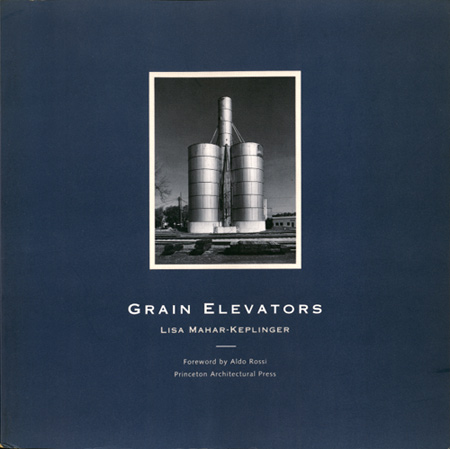Review: Grain Elevators by Lisa Mahar-Keplinger

Let me guess: You saw the title “Grain Elevators,” and you got your eyes lubricated for the rolling (“Give me a break, I can’t take any more typologies!”), only to be confused to see the name Lisa Mahar-Keplinger instead of Bernd and Hilla Becher. Another book about grain elevators? When I found Grain Elevators in a stack of books at Strand Books, I couldn’t believe it, either. But out of sheer curiosity I had a quick peek at the book, and I decided I had to get it - for a variety of reasons. (more)
First of all, even though I’m a scientist by training I still find it fascinating that people would obsessively study a particular object for which normal mortals have only one word or phrase (disclaimer: I’m a theorist, doing computer simulations; studying the shapes and sizes of galaxies has always struck me a bit like dumping a bag of dried beans on the table, to study their shapes and sizes). Coincidentally, that is also part of the Becher fascination for me: I could never drive around the country, taking photographs like that - I’m in awe of the dedication and very slightly disturbed by the level of obsessiveness. Seeing Becher grids to this day makes me think “I can’t believe they actually did all that.”
Second, I’m not the kind of person who is overly interested in how industrial structures work. If I see a gas tank, say, I’m happy to know that it’s a big metal structure, with gas inside, and hopefully it has been constructed well enough to keep the gas inside. That’s enough details for me. But every once in a while, I do enjoy getting a peek at how things really work. The Becher Grain Elevators book shows you lots and lots of images. Mahar-Keplinger’s Grain Elevators does that, too, but there is a whole lot more. There really are a lot of details to be considered, and it’s somewhat fascinating to see those. Which means that…
Third, Mahar-Keplinger’s Grain Elevators can be seen as a technical primer of sorts, or as a complement to the Becher book. It might thus make one appreciate the work of the German photographers more, by showing the different facets that are contained in the term “typology.”
Grain Elevators (here and in the following I am referring to Mahar-Keplinger’s book) contains photography of these structures, some of it shot Becher style (face on, in a uniform way). It uses a lot of very snazzy diagrams to visually tie the outer appearance of grain elevators to what is inside (I’ll admit I’m a sucker for diagrams). In a nutshell, it explains why grain elevators look the way they look, what they are made of, what is inside, and why they are placed where they can be found (both in rural settings and inside a city).
Here’s the thing. While such a description sounds, well, boring, as a book Grain Elevators is oddly compelling. And if you’re a fan of blogs like the arkinet one or BLDGBLOG, this is just the book for you. It really adds dimension to the achievement of Bernd and Hilla Becher, by providing some background of one of the structures they photographed so much.
Unfortunately, the only problem is that finding Grain Elevators online at a good price might be a bit of a problem. It has slightly over 80 pages, and paying a lot of money for it strikes me as slightly silly. As I said, I found it used (and seeing how much people charge for it, it was quite the bargain). For those who just want to get a general idea what the book is about, I made another one of my Not So Steady Right Hand Productions videos (as always unscripted and unedited), which can be found here.